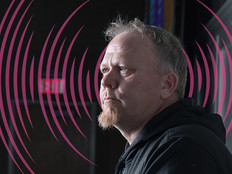To satisfy that desire, colleges and universities have turned their attention to building the most robust hybrid environments possible. Incorporating asynchronous and synchronous tools offers students the flexibility they want, while replicating the intangible benefits of face-to-face instruction that online learning tools have sometimes struggled to mimic.
If they can do that successfully and create a sense of community and connection to campus, regardless of modality, it could be the key to turning around flagging retention rates for online students. Feeling a connection to a physical campus, to classmates and to instructors can make students feel like a valued part of their communities.
At CDW, our higher education team has been focused on working with colleges and universities around the country to make sure they get the most out of hybrid learning, and we’ve helped our partners identify the best ways to create a sense of community in those environments.
Here’s some of what we’ve learned.
LEARN MORE: Why Portland State University is committed to hybrid learning.
Device Programs and AR Can Build Community Connections
Perhaps the most straightforward way to ensure connection for students is to put the right technology in their hands. Device programs are now commonplace across the higher education landscape, and for good reason: These programs ensure all students equitable access. Loading devices like tablets or laptops with the same collaboration software and other learning tools can further guarantee that students can participate fully in hybrid courses.
Once students are at the same technological starting point, it’s worth exploring the burgeoning world of augmented and virtual reality. Tools like Microsoft Mesh, which brings augmented reality to classrooms through Microsoft Teams, allow students to converse in the metaverse (or, as it’s known in higher ed, the metaversity). Mesh, which is a cloud-based platform built through Microsoft Azure, is just one of several AR options that can be incorporated.
AR and VR are designed to re-create the kind of human connections that students are missing when learning outside the classroom. AR, VR and extended reality (XR) have the power to be transformational technologies in higher education. One of their biggest selling points is the human-to-human connection they allow that goes far beyond the video or chat experience found in standard collaboration tools.
At the same time, AR, VR and XR remain new and evolving technologies, and universities incorporating those tools can expect a steep learning curve for instructors and students alike as they work through the best use cases.
Get the checklist and see what questions you need to answer about your hybrid learning program.













